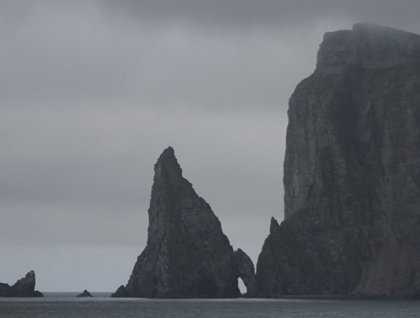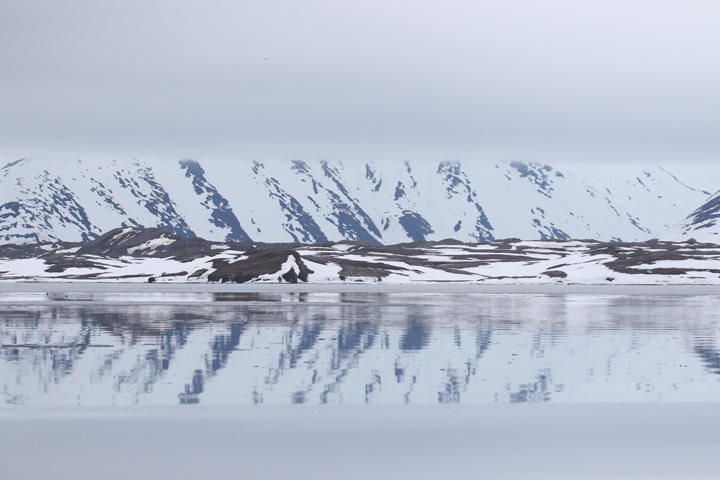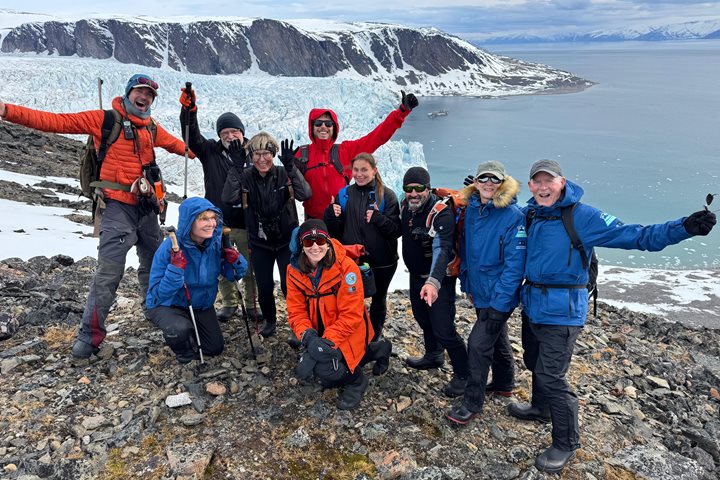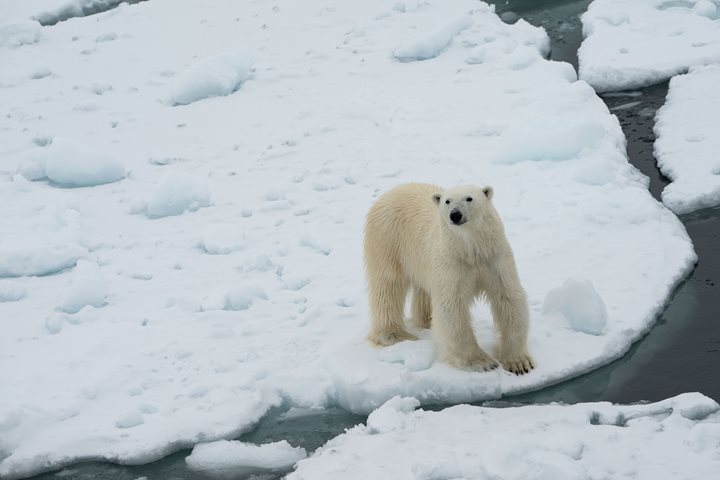After an overnight voyage from Tromsø we made our first stop in the region of Svalbard. We left the coast of mainland Norway 250 miles to the south of us, and arrived at Bjørnoya, a remote lump of rock isolated in the Barents Sea.
The weather in this part of the world is notoriously poor, so we were pleasantly surprised to encounter a fine day. There were low clouds sitting over parts of the island, but despite this the highest peaks of the island were occasionally visible and the dramatic 300-metre-plus sea cliffs were clearly visible. After anchoring in a protected bay we boarded Zodiacs for a closer exploration of this coastline. What immediately became apparent was that not only was the coastline spectacular, but the cliffs also supported vast numbers of breeding seabirds.
During our approach to the island we had already seen hints of the richness of the waters around Bjørnoya. We had seen fishing boats, large numbers of seabirds and a group of humpback whales. But a closer inspection of the cliffs revealed seabird abundance on a scale rarely encountered anywhere. Estimates of the seabird population here suggest that somewhere in the order of one million seabirds may be found around the island in summer.
In addition to an abundance of birdlife, the Zodiac cruise also explored small caves and passages and a shipwreck from 2009. The advanced rust and decay of the four-year-old wreck of the Petrozavodsk clearly demonstrated that the weather in this part of the world is typically less benign than what we were fortunate to encounter today.







